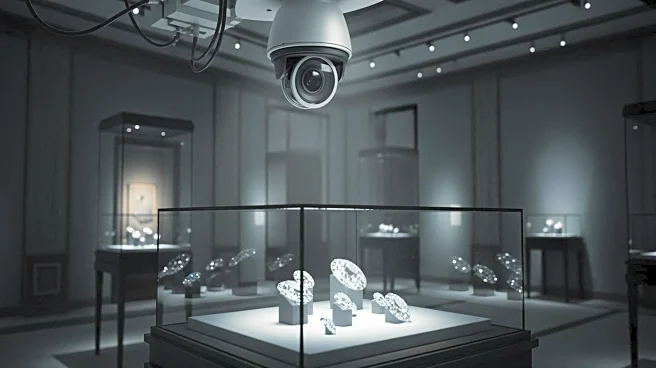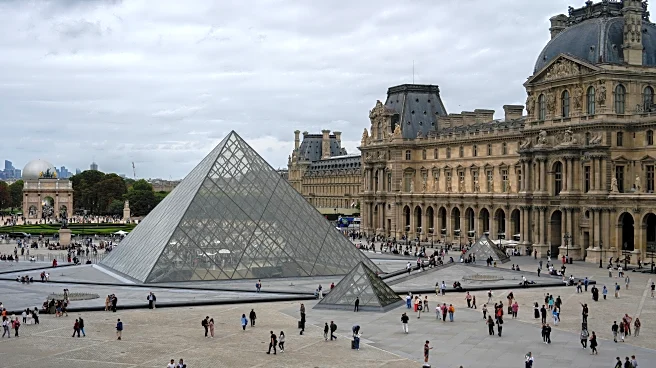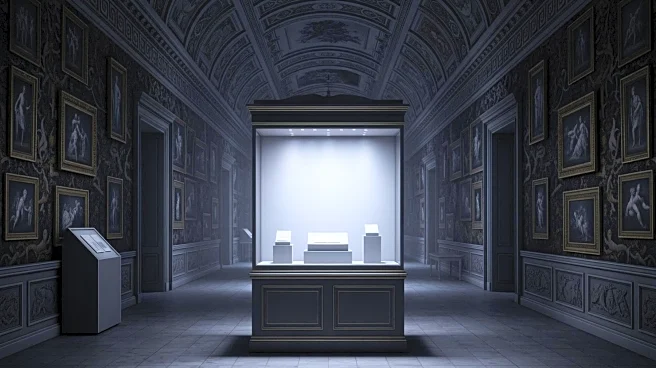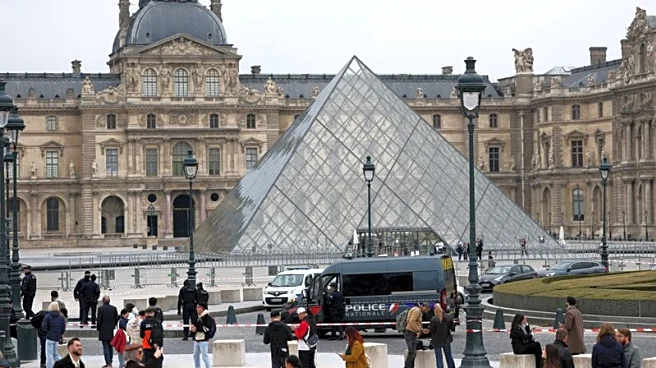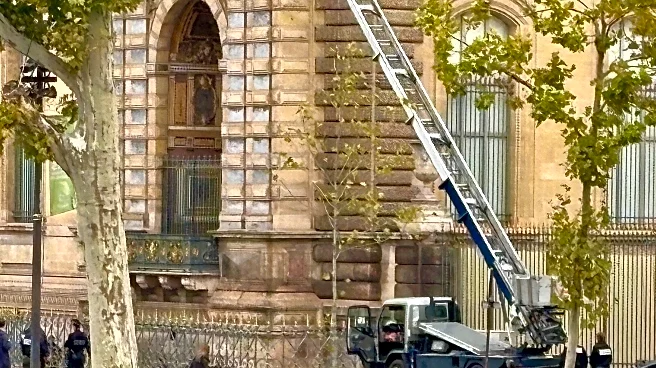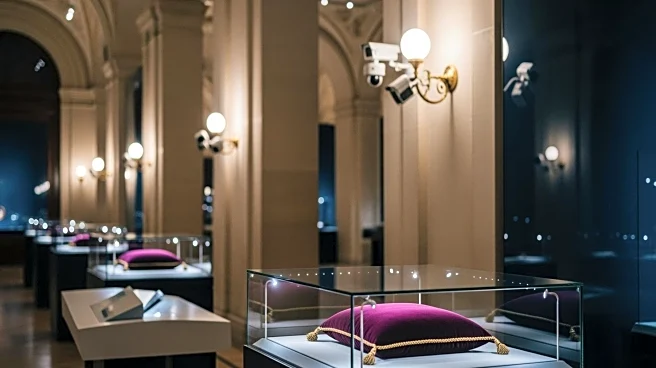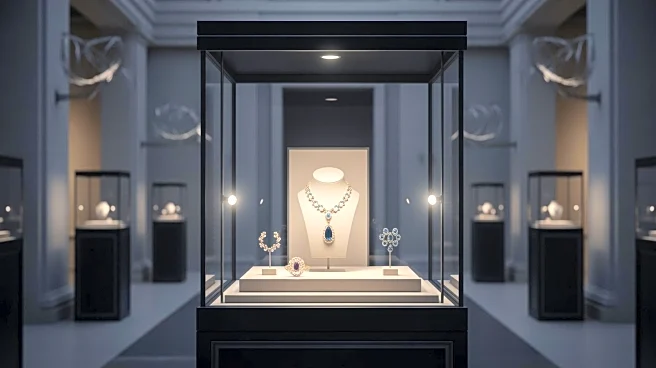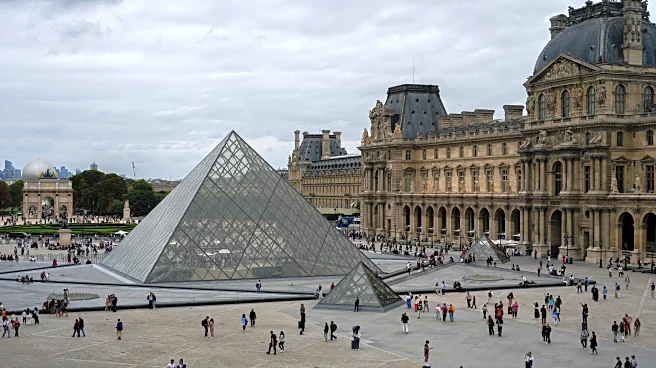What's Happening?
On October 19, 2025, thieves executed a daring daylight robbery at the Louvre Museum in Paris, stealing treasured jewelry from the Apollo Gallery. The heist, which lasted seven minutes, involved the use of
a truck and elevated platform to access the gallery through a window. The stolen items, part of the French crown jewels, are of immeasurable heritage and historical value. The museum was evacuated and closed for the day to preserve evidence, while police launched an investigation to recover the stolen goods. The incident has raised questions about the museum's security measures and the impact of overcrowding on its operations.
Why It's Important?
The theft of the French crown jewels from the Louvre Museum is a significant cultural loss, highlighting vulnerabilities in the security of major cultural institutions. The incident underscores the challenges faced by museums in protecting valuable artifacts while accommodating large numbers of visitors. The robbery has sparked political debate, with criticism directed at the French government for perceived security lapses. The theft may prompt a reevaluation of security protocols and staffing levels at the Louvre, as well as broader discussions about the preservation of cultural heritage in the face of mass tourism.
What's Next?
The Louvre Museum is expected to conduct a comprehensive review of its security measures, particularly in areas vulnerable to breaches. The investigation into the theft is ongoing, with authorities seeking to recover the stolen jewels and apprehend the perpetrators. The incident may lead to increased funding and resources for museum security, as well as discussions about the balance between public access and artifact protection. The French government may face pressure to address security concerns at cultural sites and implement measures to prevent future thefts.
Beyond the Headlines
The theft raises broader questions about the ethical responsibilities of museums in safeguarding cultural heritage. It highlights the tension between accessibility and security, as well as the impact of tourism on cultural institutions. The incident may influence international standards for museum security and artifact protection, prompting discussions about the role of museums in preserving history while remaining open to the public.
